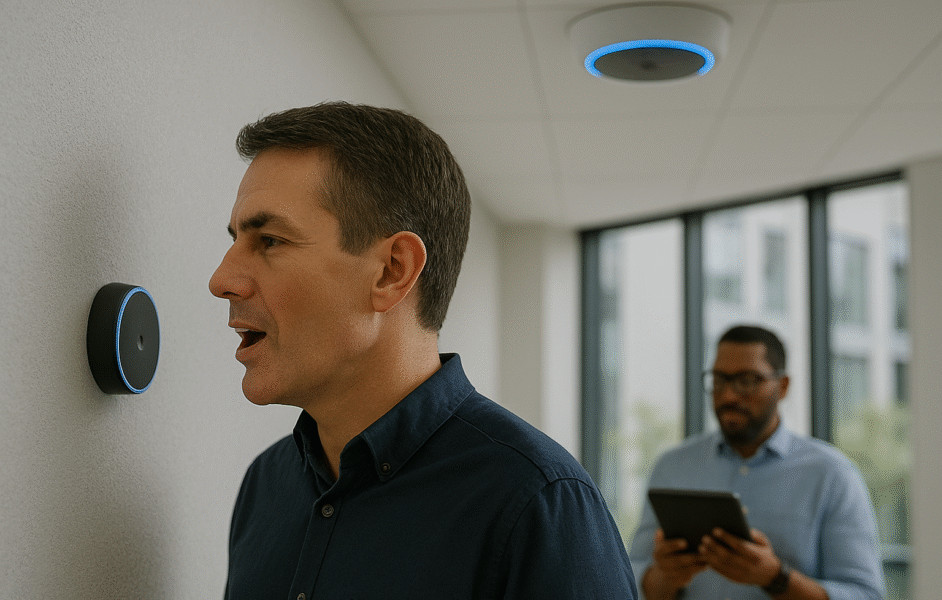Conversational AI, which enables machines to simulate human dialogue, has emerged as one of the most sought-after AI applications in today’s market. IDC forecasts that the conversational AI software services market will continue its strong acceleration through 2024-2028, reaching over $31.9 billion in revenue by 2028. Yet, with the growing hype around conversational AI, it begs the question: Who actually needs it, who’s using it effectively today, and who’s at risk of falling behind?
Beyond chatbots: What Conversational AI really is (and isn’t)
Conversational AI is often reduced to chatbots and voice assistants, but that’s just the tip of the iceberg. While chatbots typically follow pre-set scripts and decision trees, conversational AI uses natural language understanding (NLU) and machine learning to interpret intent, context, and even tone. This allows it to go beyond simple Q&A, handling more complex, dynamic interactions that evolve over time. In other words, a chatbot might answer a question, but conversational AI can hold a conversation, adapt to the user, and learn from every exchange.
At its core, conversational AI is about enabling machines to engage in natural, meaningful dialogue to drive real outcomes. It powers everything from hands-free equipment checks on a factory floor to proactive fraud alerts in banking apps. It’s not just a tool for customer service – It’s a strategic layer that helps businesses operate faster, work smarter, and scale to support millions of interactions at once. When implemented effectively, it becomes a force multiplier for teams, automating the repetitive while surfacing insights that drive decision-making.
Here’s an overview of a few key capabilities that set conversational AI systems apart from traditional chatbots:
- Integrate deeply with business systems – Pulls real-time data from Customer Relationship Management (CRMs) Systems and Enterprise Resource Planning Systems (ERPs), and other tools to take action, not just deliver information.
- Support multilingual interactions – Communicates fluently across languages, helping companies serve global audiences more effectively.
- Drive outcomes, not just answers – Helps close sales, schedule appointments, resolve support issues, and trigger next steps without needing human intervention.
Where conversational AI is already working
Some industries have started to embrace conversational AI – and it’s paying off. In sectors like retail, healthcare, and finance, the technology aligns especially well with day-to-day needs: high volumes of customer interactions, time-sensitive requests, and demand for personalization. Because of this natural fit, these industries are seeing real gains in efficiency, customer experience, and operational scale.
Let’s look at a real-world example:
Bank of America’s Erica is more than a chatbot, it’s a virtual assistant powered by conversational AI that has handled over 1.5 billion interactions since 2018. Today, it engages with clients 56 million times per month and has become a trusted tool for managing subscriptions, tracking spending, and surfacing key financial insights. Notably, more than 60% of those 1.5 billion interactions were driven by personalized and proactive insights, showing how conversational AI can go beyond reactive support to deliver real, ongoing value.
Erica shows what’s possible when conversational AI meets the right use case. While some industries are naturally well-suited and already seeing the upside, many others have just scratched the surface, and the potential gains are still wide open.
The up-and-coming industries to harness conversational AI
Some industries have been slow to embrace conversational AI, but they’re entering the game now, and momentum is building. In fact, Gartner predicts that by 2026, automation in agent interactions will increase fivefold, reaching 10% compared to 1.8% in 2022.
In the automotive industry, voice assistants are already reshaping how drivers interact with their vehicles, making hands-free controls safer and more intuitive. Notably, Tesla is leading the way here, while others lag behind. In supply chain and logistics, AI-driven updates and voice-enabled inventory management are cutting manual work and reducing errors. Media and entertainment companies are exploring interactive, conversational experiences that make content more engaging, while insurers are beginning to use AI to streamline policy selection and claims processing.
Meanwhile, some industries are missing the wave entirely. Education, legal services, real estate, and government agencies have dramatically lagged in adoption, citing legacy systems, regulatory complexity, or lack of volume as barriers. But those excuses are starting to wear thin. Forward-looking players in these sectors, like agencies using AI for virtual tours in real estate, are already proving what’s possible. The gap between innovators and holdouts is widening, and for those still resisting change, the risk isn’t just falling behind; it’s becoming irrelevant.
What was once experimental is now in full motion and delivering measurable results. The challenge is that many companies don’t realize conversational AI fits their needs until a competitor moves first.
Hybrid wins: The real power of Conversational AI is human + machine
So what should executives focus on to bring their teams into the age of conversational AI?
It starts with a strategic, hybrid approach. Conversational AI isn’t here to replace people, it’s here to amplify them. When deployed thoughtfully, it takes on repetitive and time-consuming tasks, so human teams can focus on what they do best: critical thinking, creative problem-solving, and building relationships.
Skepticism around this technology is understandable. There’s been no shortage of fearmongering headlines about AI replacing jobs. But that’s exactly why hybrid models matter. They shouldn’t eliminate roles; they should elevate them. According to Amazon researchers, effective conversational AI systems should be designed to recognize their own limitations, fall back to human experts when uncertain, and continuously learn through human-in-the-loop feedback. If your AI system isn’t operating like that, then it’s not true conversational AI. Conversational AI should not act as job displacement – it should act as job evolution.
Looking ahead: Why voice will be the new interface
Conversational AI is on its way to becoming the most common interface between humans and machines. The tech is here, and while it may feel unfamiliar at first, the time to lean in (and not get left behind) is now. Soon, people will interact with everything from their refrigerators to enterprise software via voice. It’s up to executives to lead the shift: to spot where conversational AI can drive value, where it can’t, and to take the reins before the next wave of interfaces passes them by.


